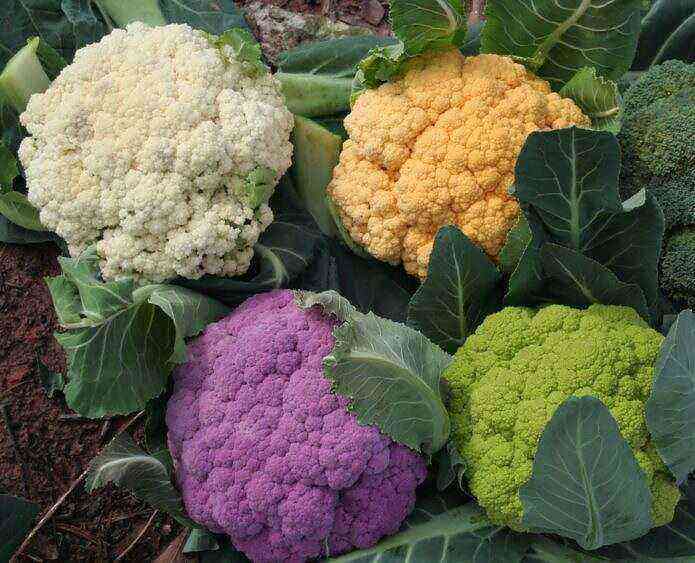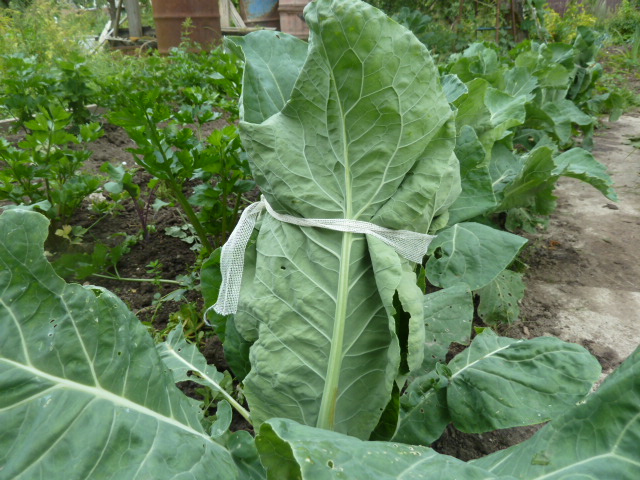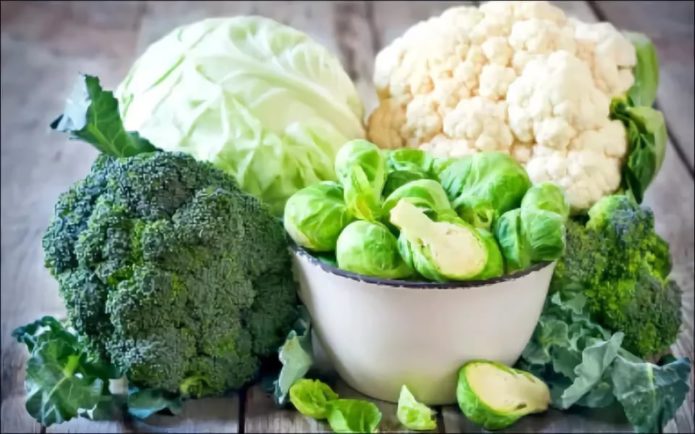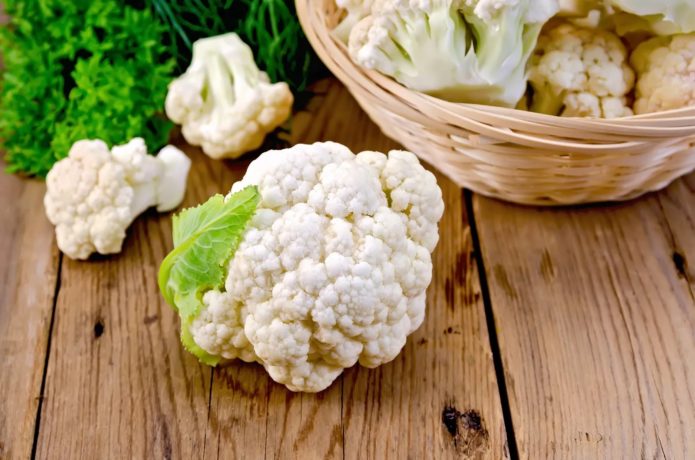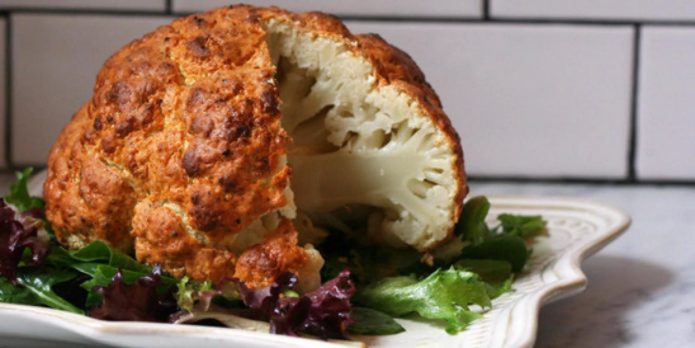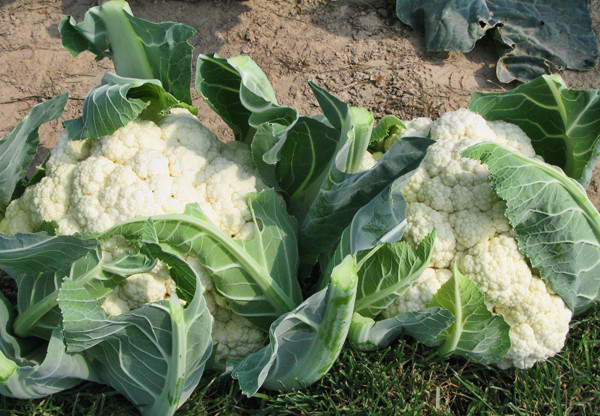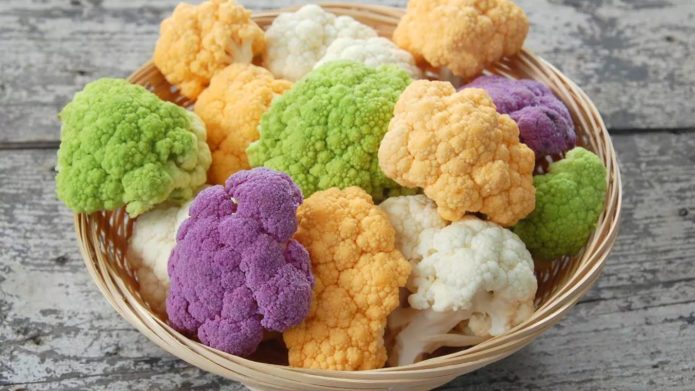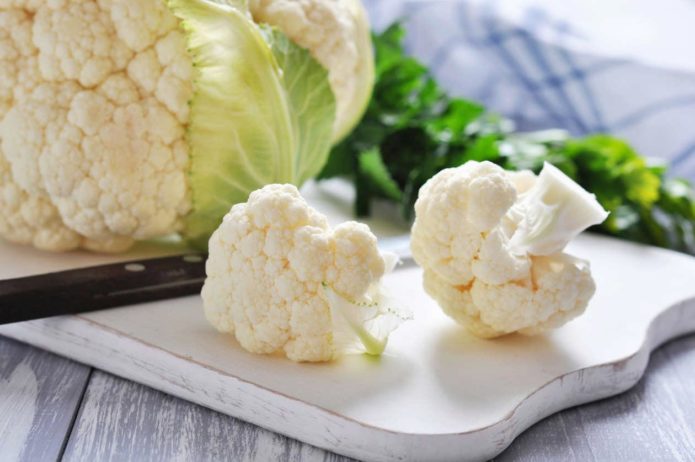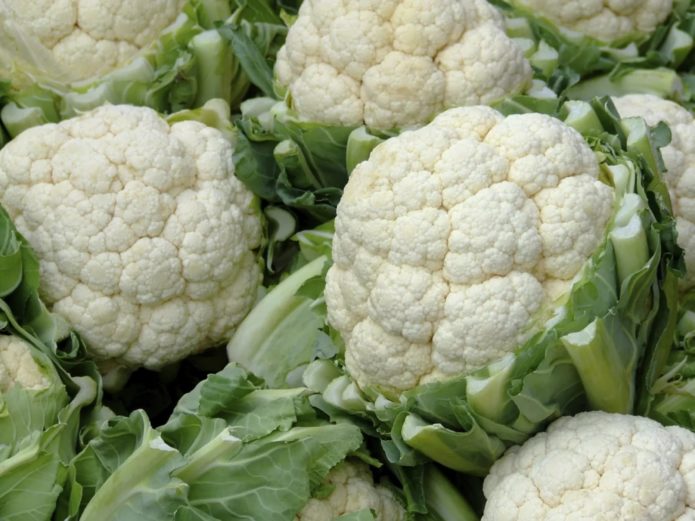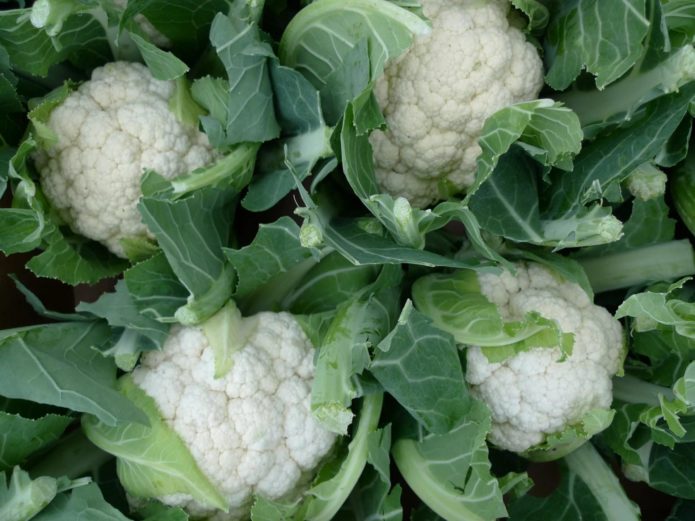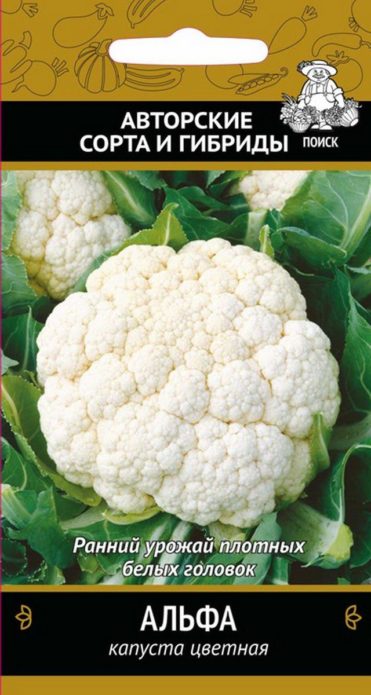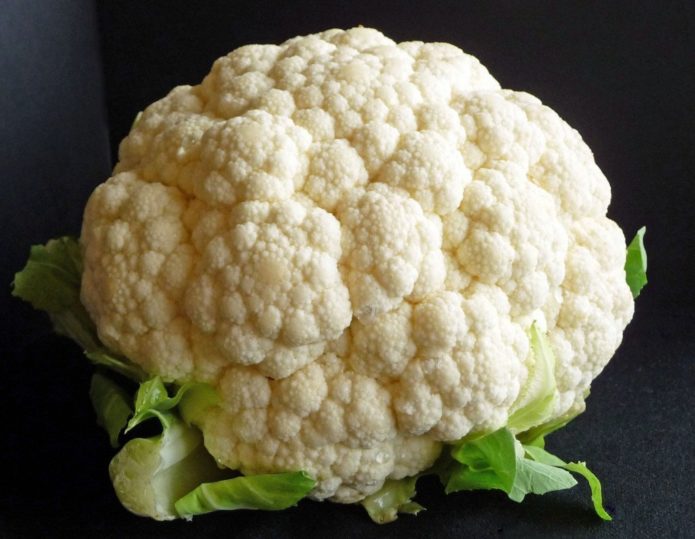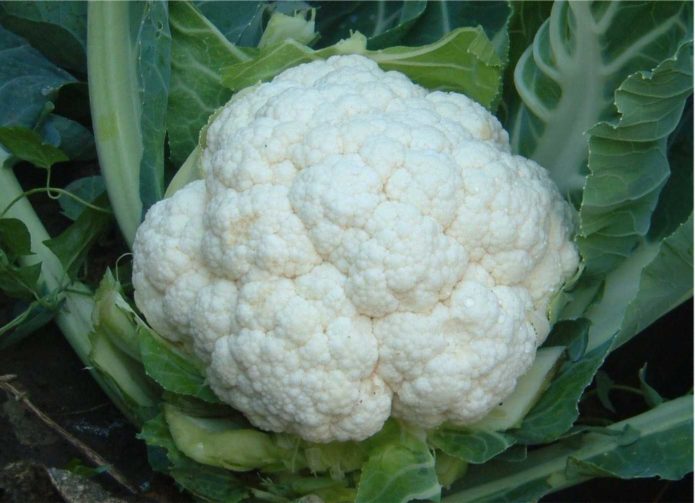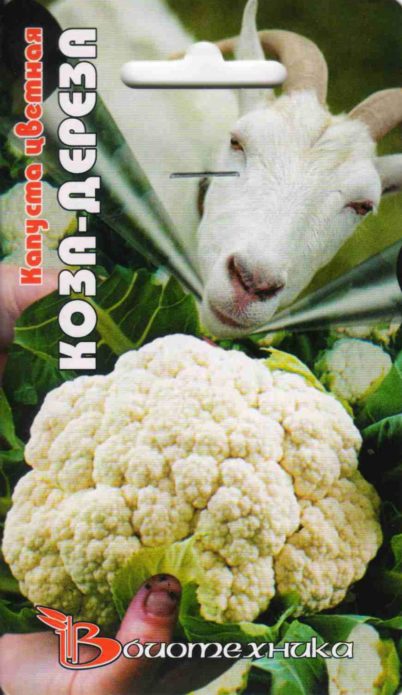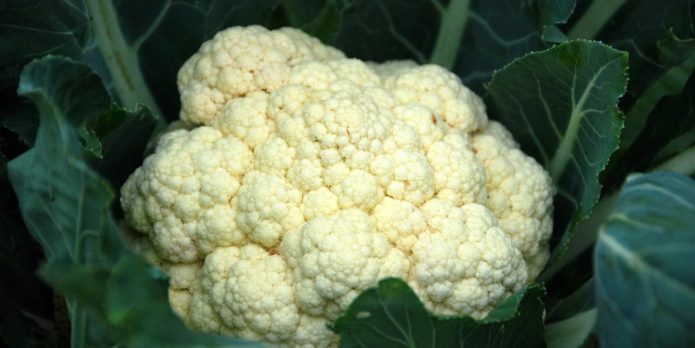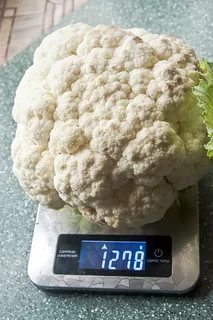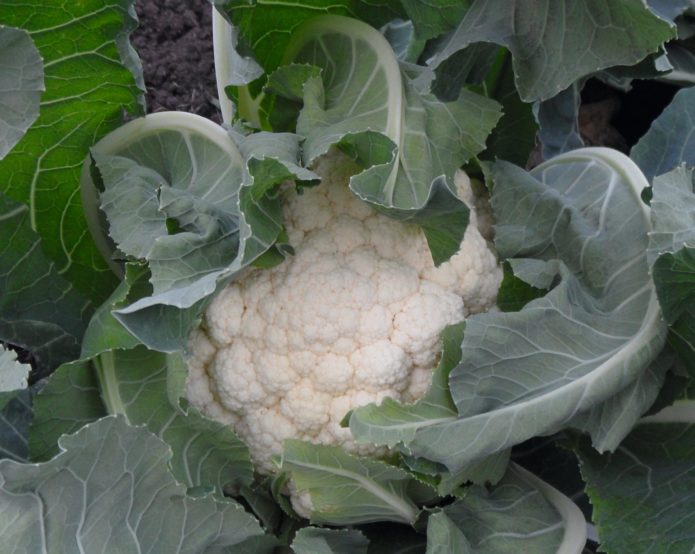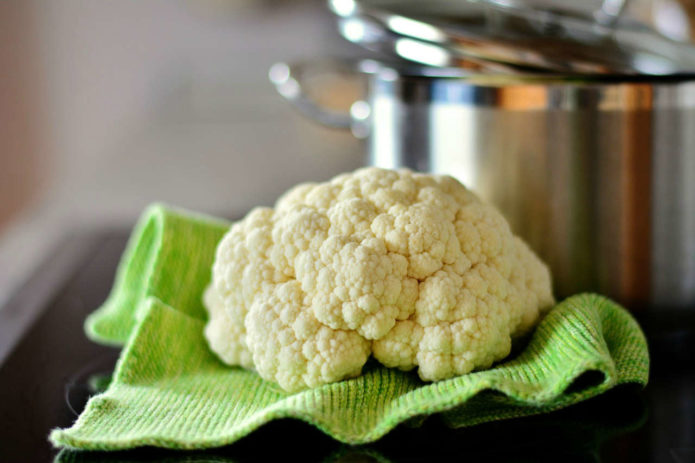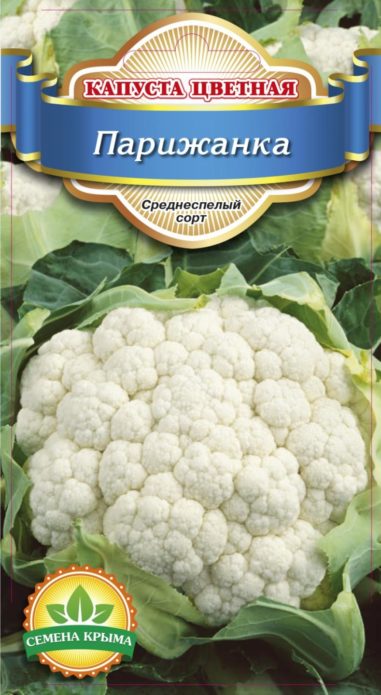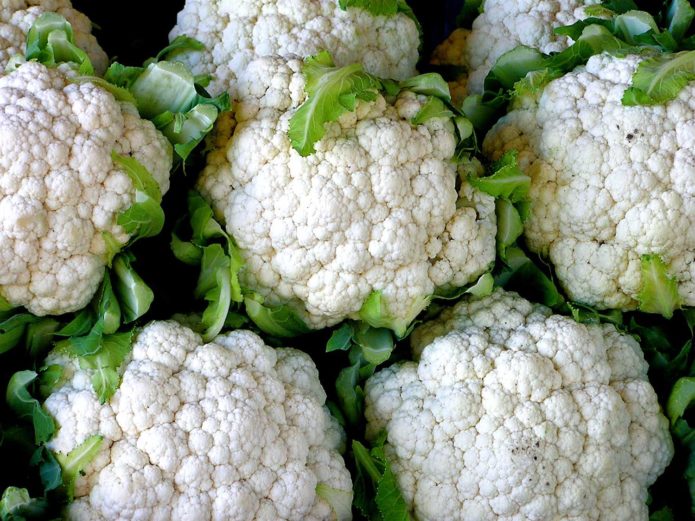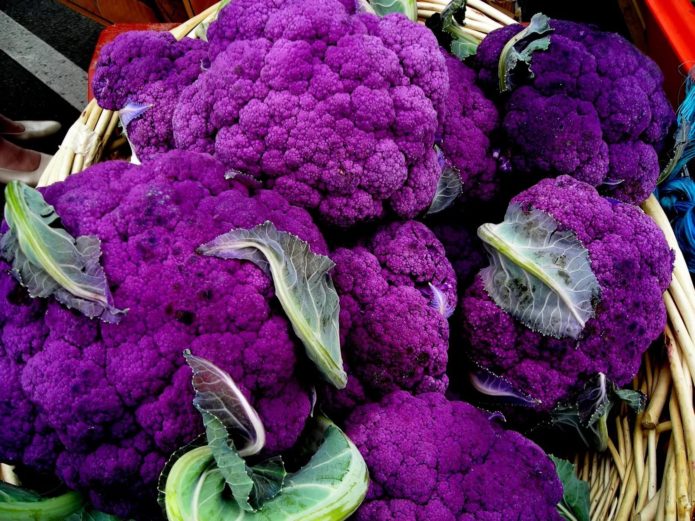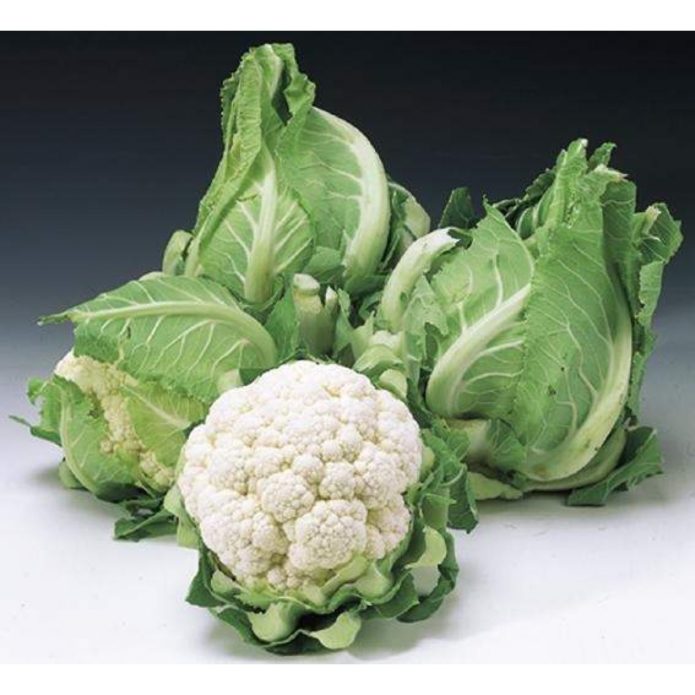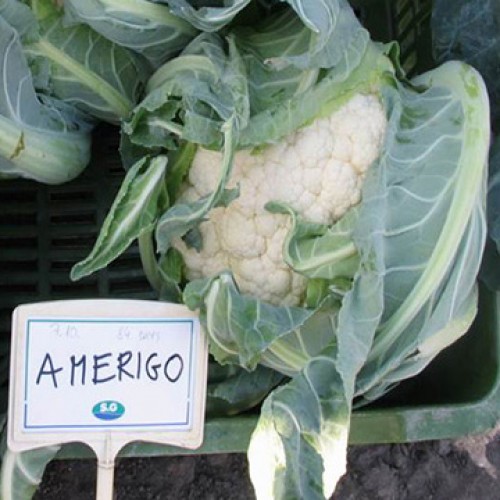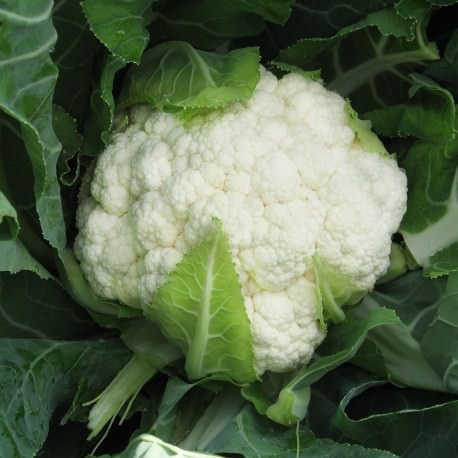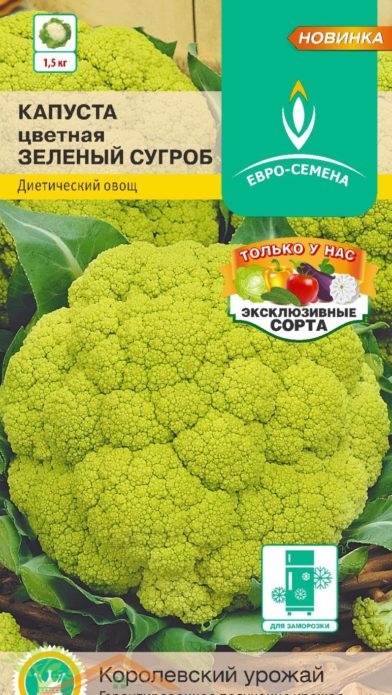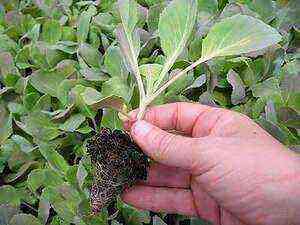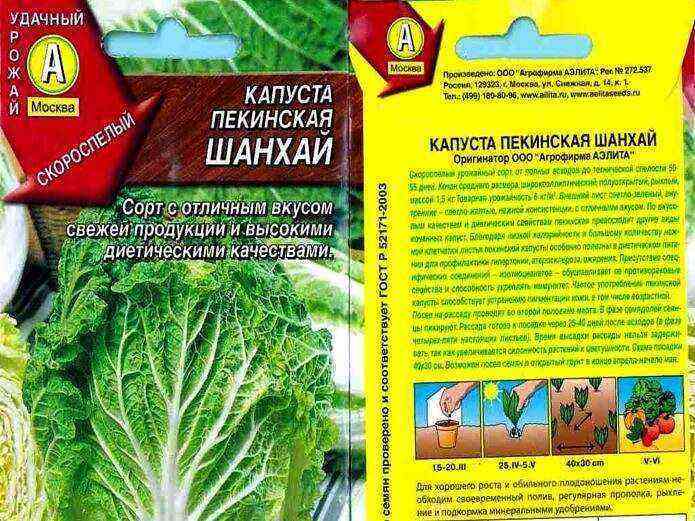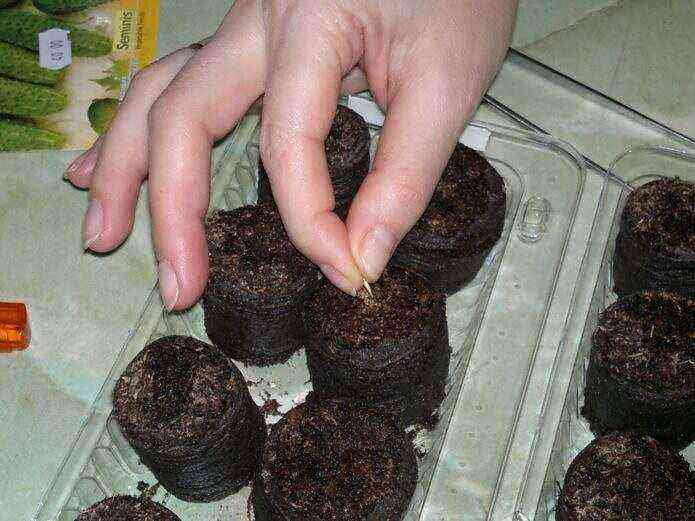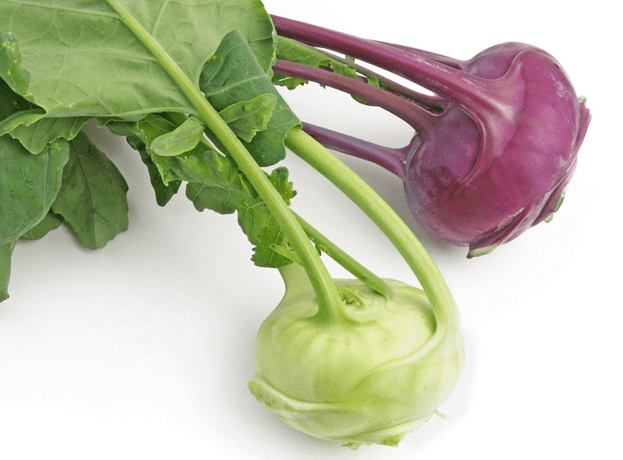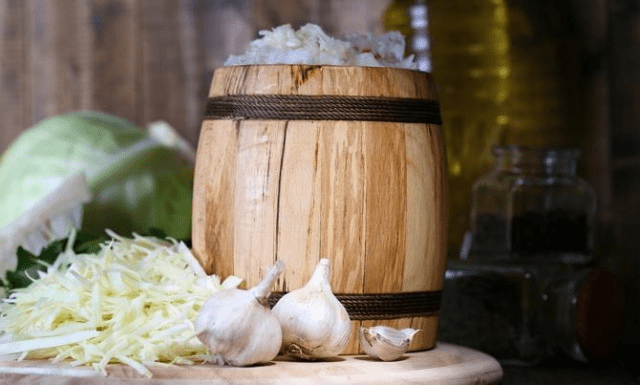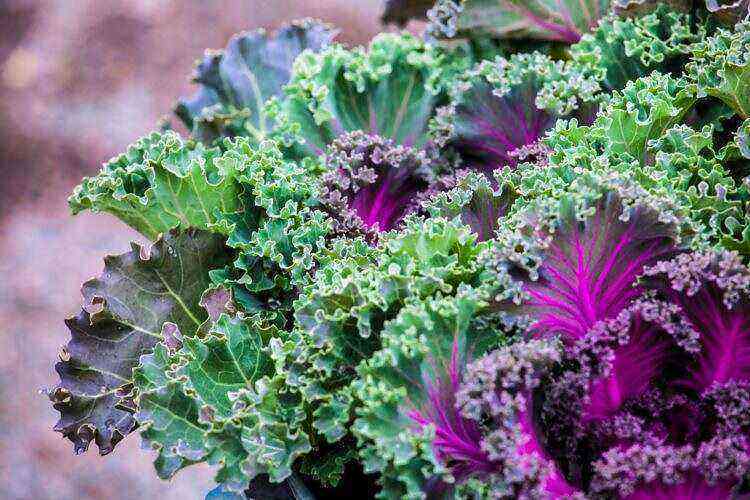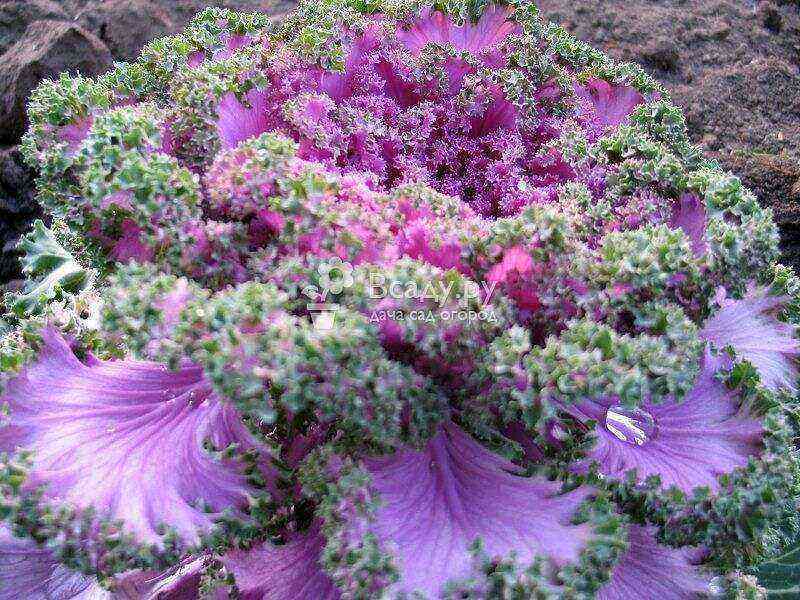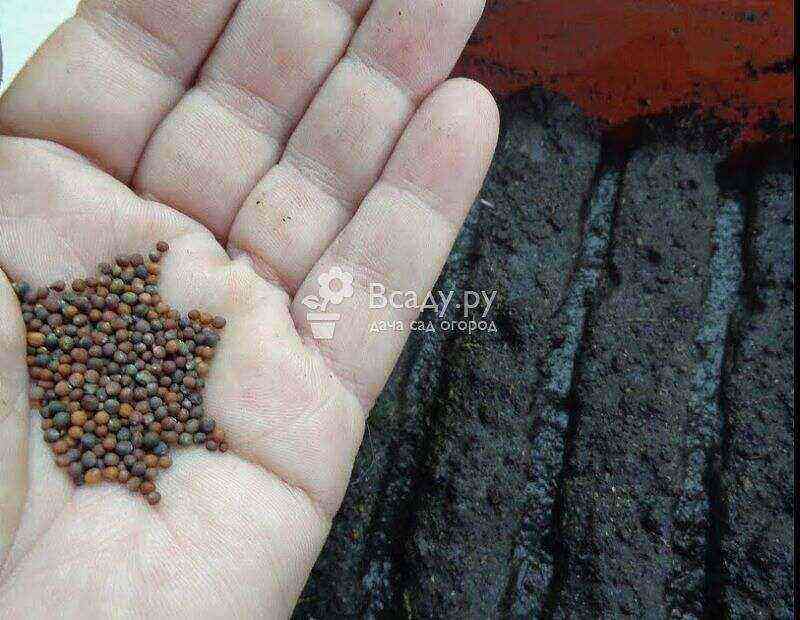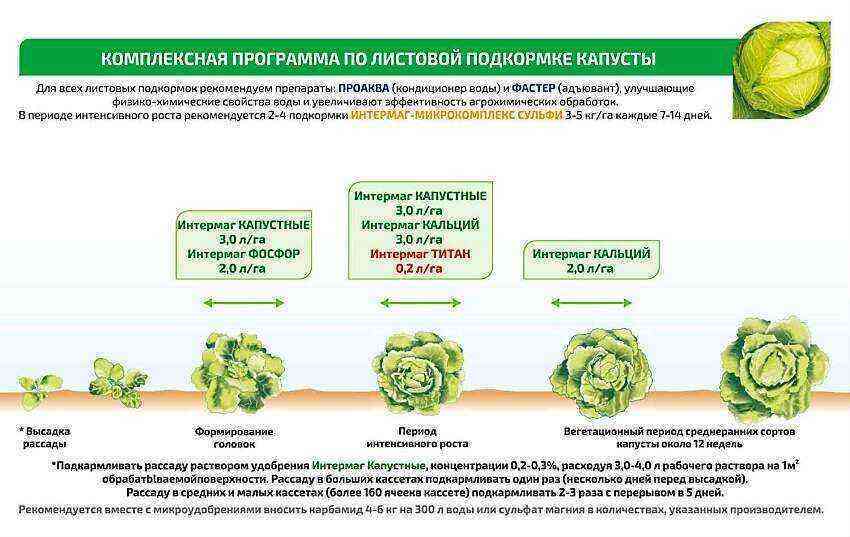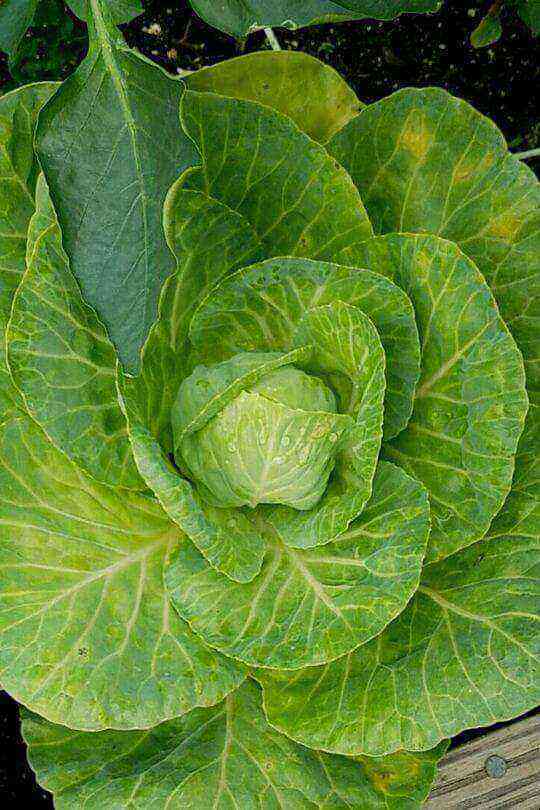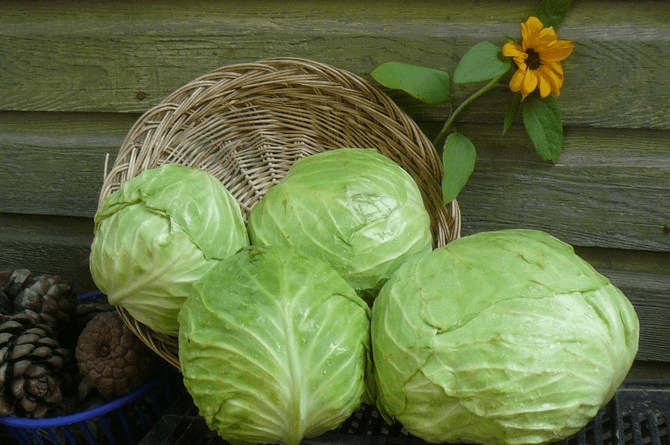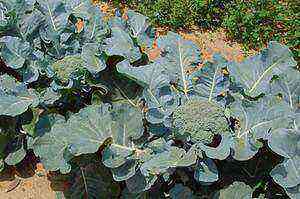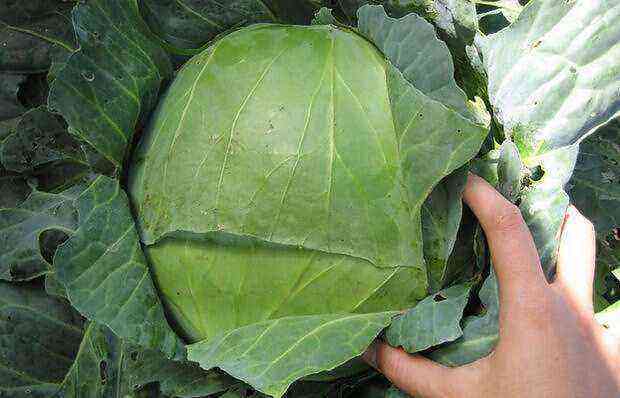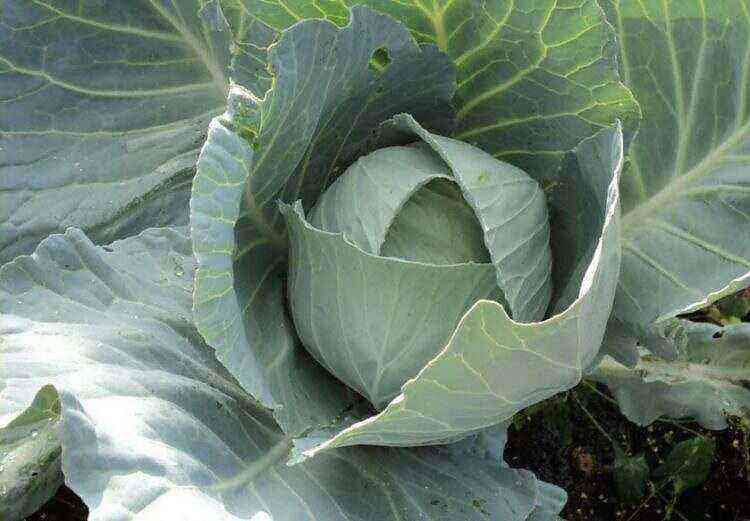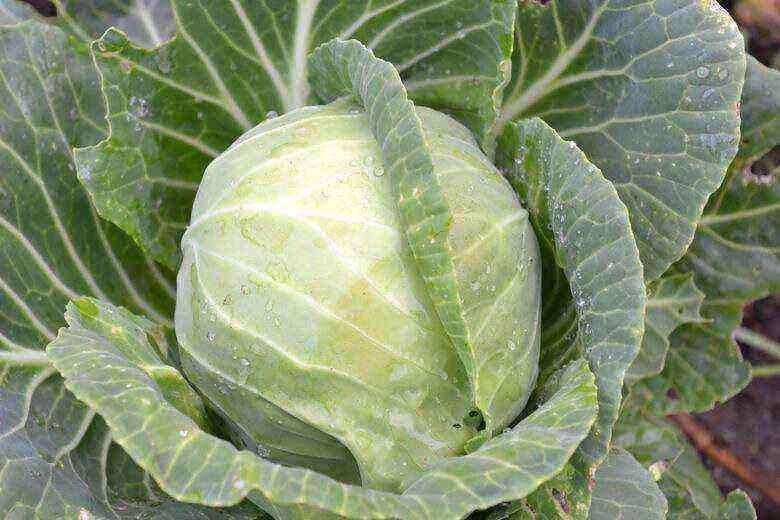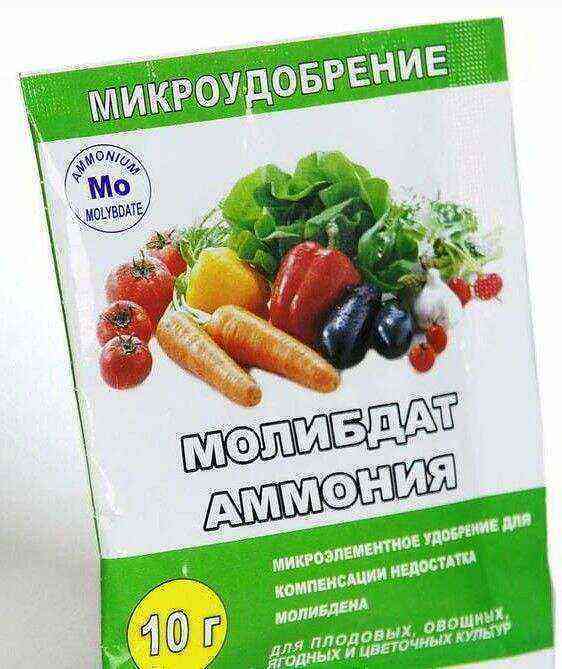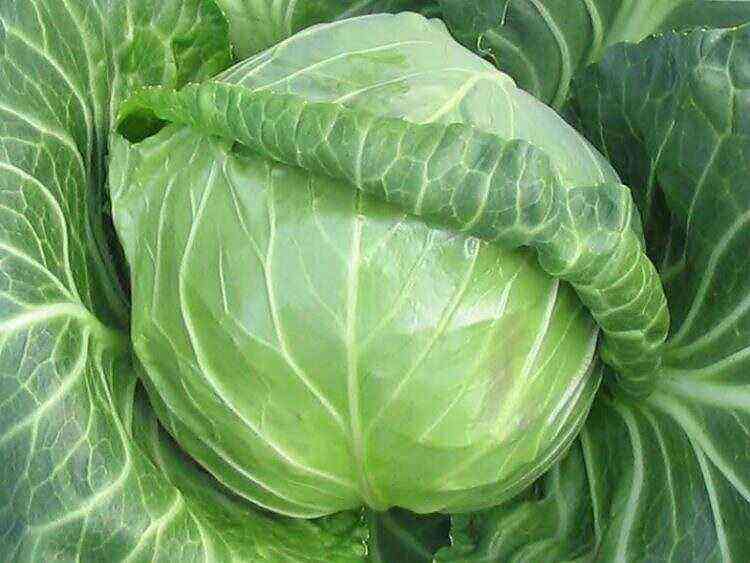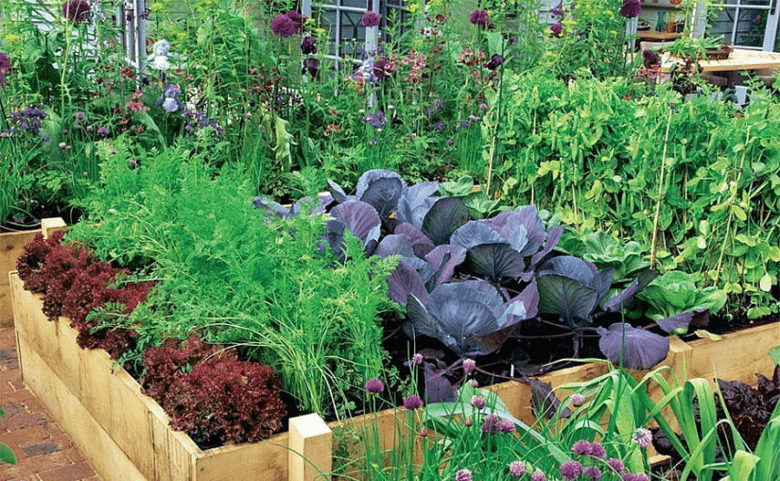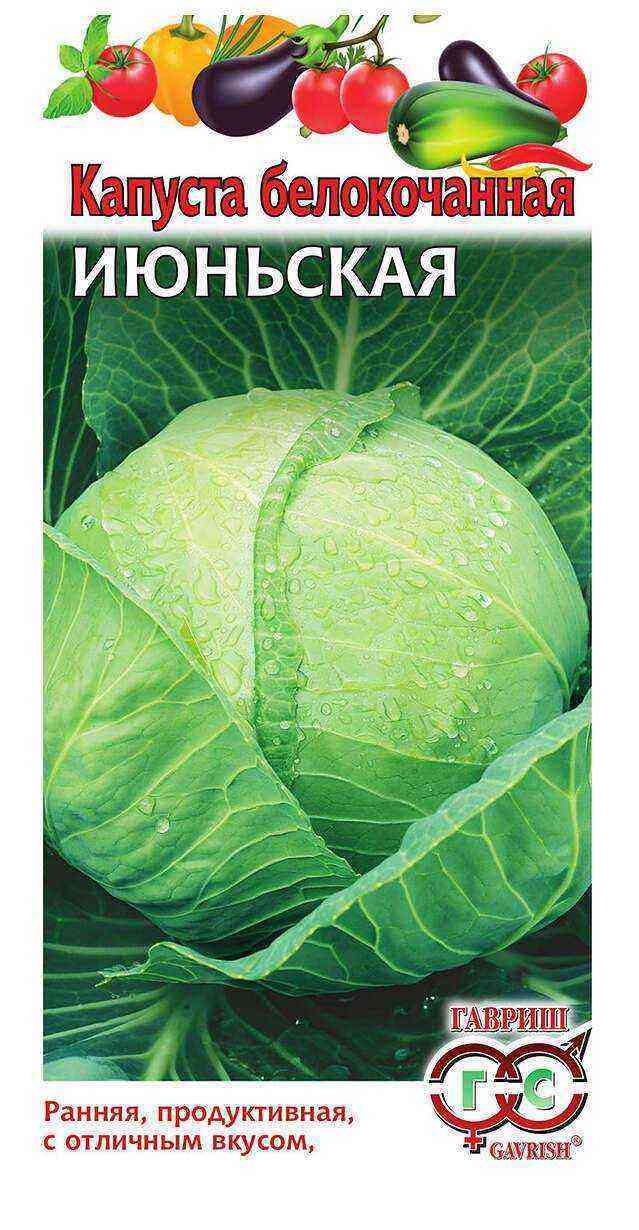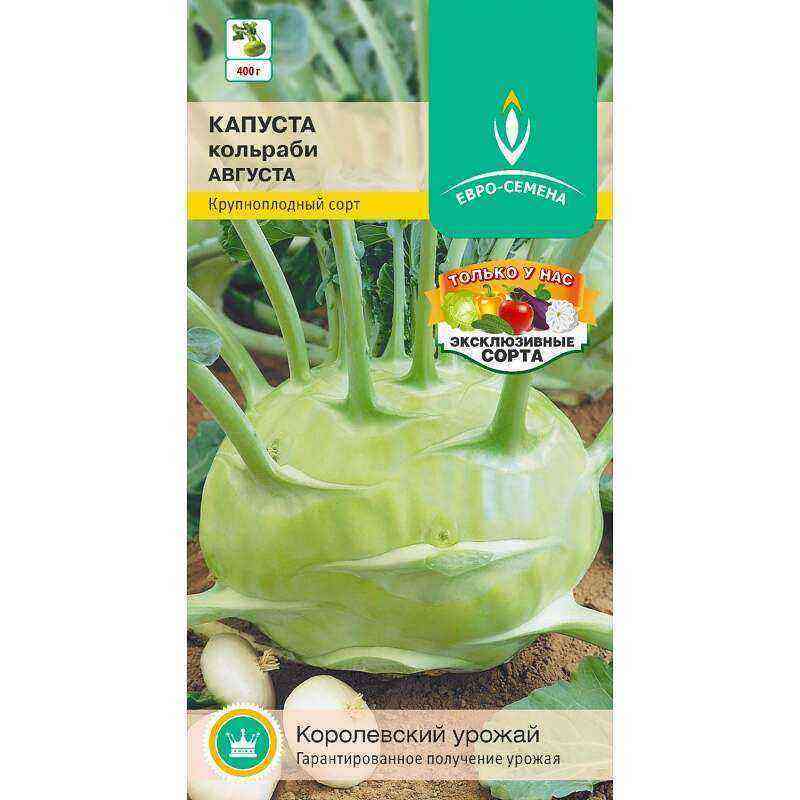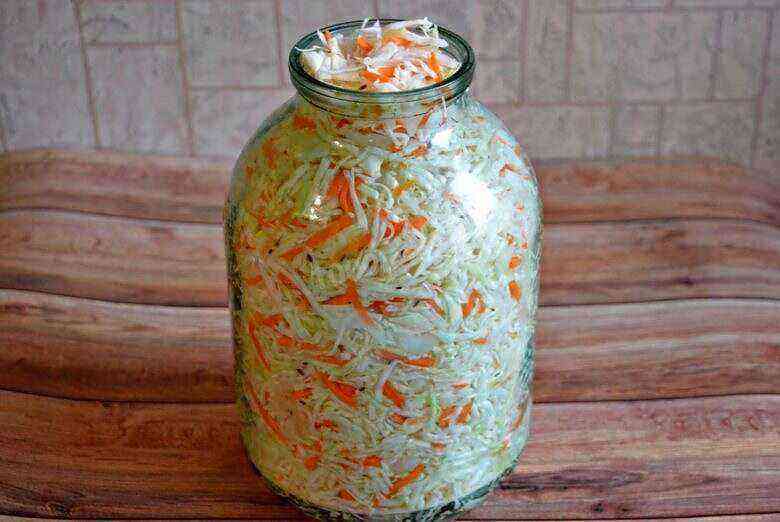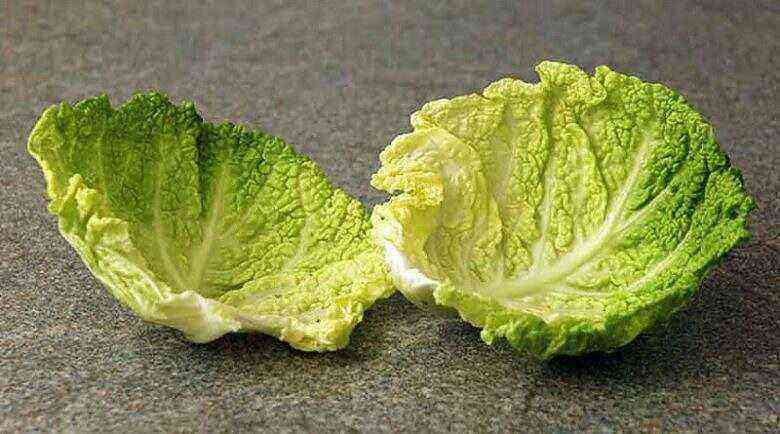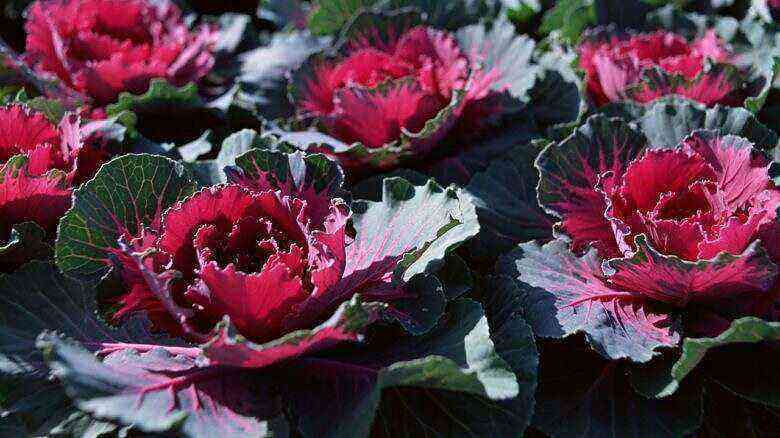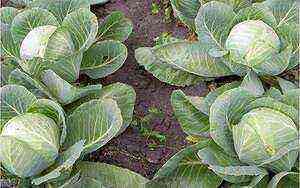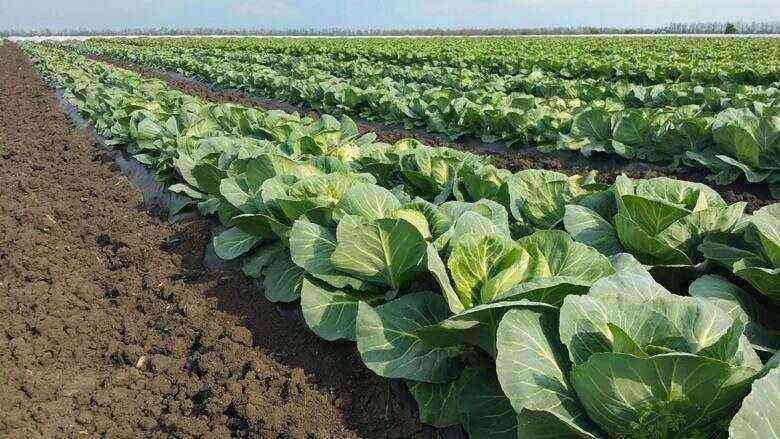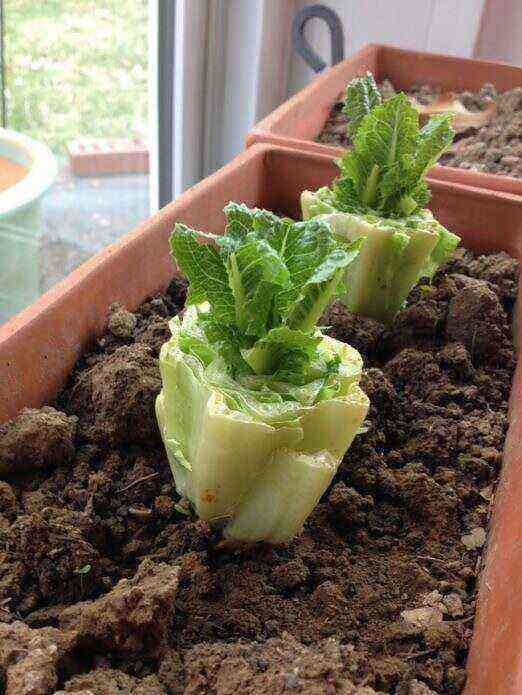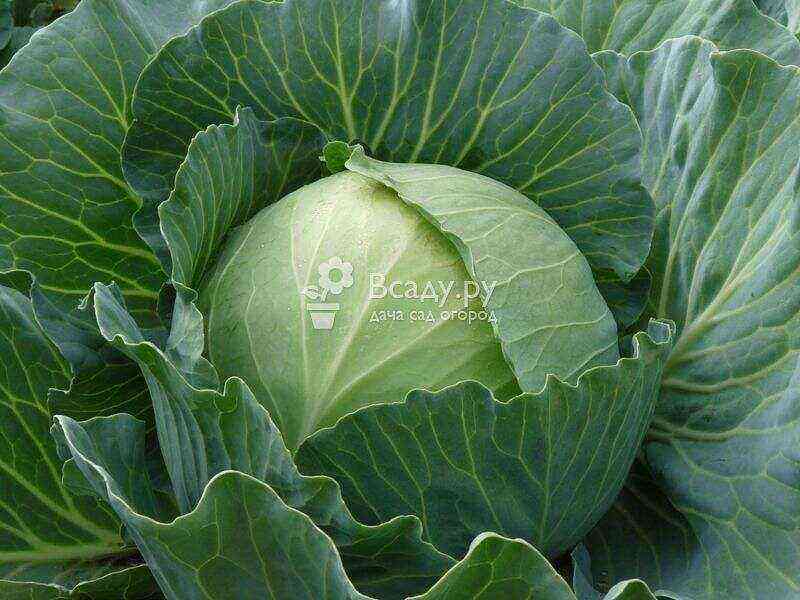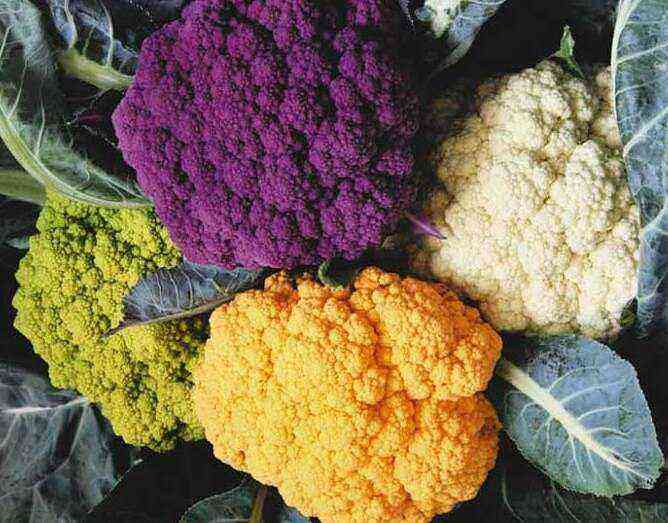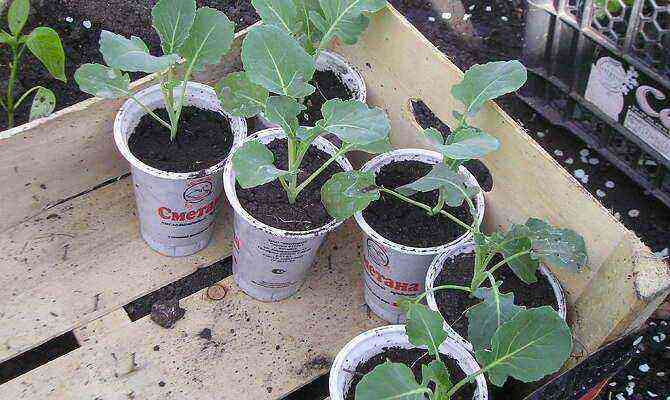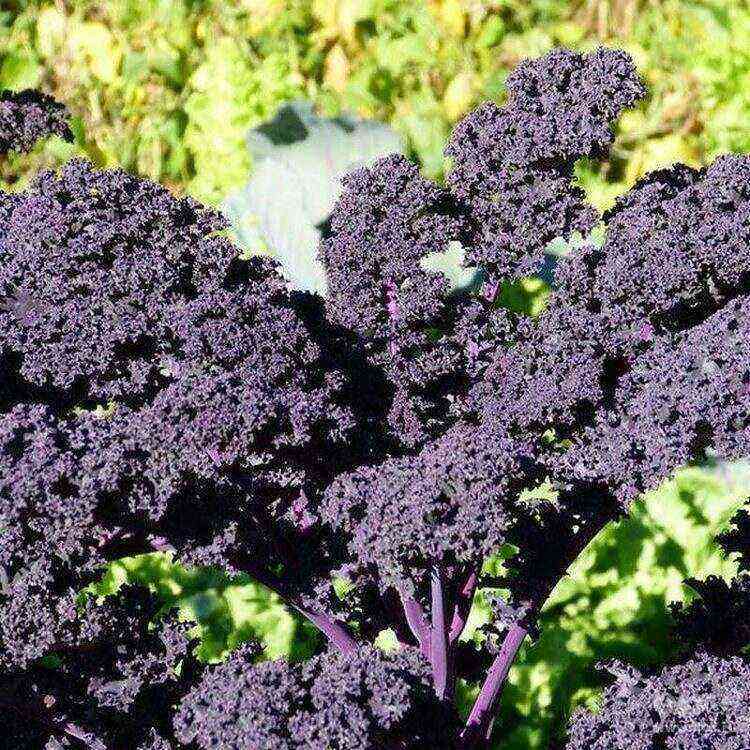Cauliflower is one of the best representatives of a large vegetable family. It has more protein and ascorbic acid than a white-headed relative. It retains nutrients better than tender broccoli. Dishes from it are recommended to be included in the children’s and diet menus. However, cauliflower occupies a very modest place in our summer cottages and backyards. Russian gardeners prefer the usual white cabbage to her. And the super-useful color is still considered exotic, as in the XNUMXth century. Meanwhile, there are many productive and unpretentious varieties of this crop, suitable for regions with different climates. Let’s take a look at the most productive ones.
Cauliflower: cultural history, plant features, composition and methods of application
Cauliflower is an annual vegetable crop. The first information about its cultivation dates back to the XNUMXth century. Arabian farmers began to cultivate this type of cabbage, therefore for a long time it was called Syrian. The progenitor of modern varieties gave medium-sized greenish-white heads, their taste was with bitterness. But even then, healers noticed how useful this vegetable is. The famous scientist Ali ibn Sina (known in Europe as Avicenna) advised his patients to eat cauliflower to promote health in winter.
People have been growing cauliflower for ten centuries.
Syrian cabbage hit the tables of Europeans in the XNUMXth century. But it was fully appreciated only three centuries later. Then the first European varieties began to appear. In Russia, cauliflower was a delicacy. It was grown only on the farms of wealthy people. The seeds brought from abroad were very expensive. In addition, the vegetable grew reluctantly under the northern sun. Only when varieties of Russian selection were bred did cauliflower become more popular.
Cauliflower is more popular abroad than in Russia
But even now this delicious and healthy vegetable is inferior to white heads of cabbage in the beds. According to some reports, only 1/100 of the sown area in the gardens of Russians is given to cauliflower. And in European countries it is grown 10 times more.
Description of the plant
Cauliflower has a powerful rod-shaped stem, the length of which can reach 70 cm. The leaf plates are located perpendicular to it or slightly upward. The shape of the bluish-green leaves (oval, feathery, lanceolate) and the size of the petioles (from 5 to 40 cm) depend on the variety. By the time of ripening, a head of undeveloped peduncles is formed at the top of the stem, it is this part that is eaten. Its color can be snow white, cream, yellowish, green or beetroot pink. If the crop is not cut, a flower panicle will rise above the head. From small yellow flowers, after pollination, leguminous fruits are formed, characteristic of all cruciferous plants. Each pod contains up to 10 ball-shaped seeds.
In order for the cauliflower head to develop well, gardeners cover it with leaves.
The roots of cauliflower are located near the surface of the earth, they are weaker and more sensitive than that of white cabbage. Therefore, the culture is more whimsical about the composition of the soil and watering.
Video: the secrets of growing the healthiest cabbage
What is the value of this vegetable, the medicinal use of cauliflower
This vegetable has earned the reputation of being one of the healthiest. Usually, cauliflower is compared to white cabbage. And it ranks first in almost all positions. There are twice as many protein compounds in colored, and three times ascorbic acid. And it also contains a lot of carotene, folic acid, thiamine, choline and riboflavin (these are B vitamins), as well as minerals. Among them, the leaders are potassium, zinc, manganese and phosphorus. In addition to the richest chemical composition, cauliflower has one important advantage for dietary nutrition – low calorie content. 100 grams contains only 30 kcal. It is an ideal product for those who are trying to lose weight or follow a healthy diet.
Cauliflower is considered the healthiest compared to other types
Cauliflower is an excellent source of plant fiber. There is a lot of coarse fiber in other types of cabbage, so it is not recommended to include it in the diet for severe diseases of the gastrointestinal tract. But colored fiber is much softer and easier to digest. And it can be used without restrictions in baby and medical food.
Cauliflower is an indispensable component of dietary nutrition
Doctors advise eating this vegetable more often, especially with a tendency to constipation, problems with the liver and biliary system, cardiovascular pathologies, to increase immunity. In addition, the researchers found that cauliflower was able to inhibit the growth of neoplasms.
The only disease in which cauliflower is harmful is gout. The course of the disease can be negatively affected by the purine compounds contained in the vegetable.
Cauliflower can be used to make many delicious dishes
Video: why you need to love cauliflower
How to choose the right cauliflower variety for different regions
When choosing cauliflower seeds, be sure to consider the climatic characteristics of your region. For northern latitudes with short and often humid summers (Leningrad Region, Perm Territory, Urals, Siberia), early varieties are suitable. Such vegetables are guaranteed to have time to ripen before the arrival of cold weather. In central Russia, including in the Moscow region, as well as in the Volga region, you can plant cabbage with an average ripening period, however, early cabbage is also a good choice. Gardeners living in the southern regions (Rostov region, Krasnodar, Stavropol Territory) can grow late varieties. But other varieties of cabbage will delight them with their harvest, if sufficient watering is provided in the heat.
To harvest a good cauliflower crop, you need to choose the right seeds.
In addition, attention should be paid to the origin of the seeds. Untested cabbage of foreign selection may not give the expected result on Russian soil. It is better to choose varieties obtained by domestic vegetable growers. Or those that have already passed experimental tests in Russia, acclimatized and entered into the State Register of Breeding Achievements. For information on cauliflower varieties see here http://reestr.gossort.com/reestr/culture/178
More reliable will be seeds directly from a breeder, an experimental farm or a company that itself tests vegetable crops. For example, the Robert cauliflower variety was bred by the specialists of the SeDeK company, which also sells seeds. Or the Snezhana variety, obtained by breeders of the Aelita agricultural company, one of the largest sellers of seeds on the Russian market. Agroholding “Poisk” offers gardeners original seeds of cauliflower, among such varieties – Alpha and Dachnitsa. The breeding firm “Gavrish” owns several varieties included in the State Register: Clara Corals, Purple, Emerald Cup.
To understand which cabbage you like best, choose seeds of different varieties and producers.
If you’re just starting out with cauliflower, don’t be limited to one cultivar and seed producer. Plant vegetables with different ripening times from multiple vendors… Even a variety that is suitable for the description can grow poorly in your area. And seeds from a trusted company could, for example, be stored incorrectly, then the germination rate will be low. Only empirically you can understand how high-quality seeds a particular company sells and whether this variety is right for you.
But this does not mean that cabbage seeds from other sellers will definitely be worse. For example, “Russian Garden”, if you believe the reviews, also offers high-quality material for crops. The company from St. Petersburg “Sortsemovoshch”, which sells under the brand “House of Seeds”, offers varieties that are zoned in the Russian north and northwest. You can buy seed and in foreign companies. But then the timing of planting and harvesting, the peculiarities of caring for cabbage must be adjusted taking into account the local climate.
Different types of cabbage are almost impossible to distinguish at the seedling stage. The characteristic signs appear much later. Therefore, when buying planting material, it is easy to make a mistake. This incident happened to me. I planted the Snow Globe cauliflower that I bought at the market and waited for its heads to turn white. They increased in size, but stubbornly remained green. And only when yellow flowers appeared on one of them, I realized that I was growing not cauliflower, but broccoli.
The best varieties of cauliflower for different regions: ripening time, description and other characteristics
The State Register of Breeding Achievements of Russia contains more than 150 varieties of cauliflower. The elders of the list are varieties bred by Soviet breeders: Early Gribovskaya (1943), Otechestvennaya (1953), Guarantee (1968), Movir 74 (1969). The most recent, in 2017, added to the register are the French varieties Karnak, Castor, Trident, Flirt, as well as Ormond from the Netherlands and the Russian Butterhead from Gavrish. Judging by how the list is replenished, this culture is still surrounded by the attention of breeders. But in the last century, early varieties were of particular interest, now more than half of the newcomers give a late harvest.
Early varieties of cauliflower are suitable for growing in all regions
As already mentioned, ripening time is the main criterion for choosing a cauliflower variety for growing in a particular area. Let us characterize the representatives of each group of the most popular among Russian gardeners.
Video: an overview of varieties
Early grades
Cauliflower varieties that yield in a short time form the largest group. There is nothing strange about this. Early vegetables are versatile and can be successfully grown in different climatic zones. And in the northern regions, only early cauliflower can be cultivated in the open field. From sowing seeds to the formation of a full-fledged head, it will take no more than 90 days, and some of the earliest varieties need even less time.
Cauliflower has many enemies. More than once I had to repel the attacks of the cabbage flea, which, without pity, makes holes in the leaves, bringing them to dryness. Once, in a rainy summer, a colony of slugs settled in one of the heads of cabbage. The rest of the copies were saved. We erected protective structures around the plants: we dug grooves, and then covered them with charcoal mixed with eggshells. The slugs did not overcome the obstacle. But after a few days, strange holes appeared on the cabbage leaves. The pest was not immediately detected. But our dogs suddenly became interested in cabbage. And the next morning, they noisily drove the fat mouse out of the garden.
However, early cabbage has significant drawbacks. Most varieties do not form very large heads. And they are not stored very long. True, this problem can be solved by canning or freezing the crop. After defrosting, cauliflower does not lose its presentation or useful properties.
Movir 74
This is one of the most tested early varieties of Russian bred cauliflower. From the appearance of the first leaves to full ripeness, it usually takes about 2 months. In a southern climate, some gardeners harvest two crops of Movir 74. For full development they need space, so they plant seedlings using a 50 x 30 cm scheme. The white or yellowish heads of this cabbage weigh 0,5-1,3 kg each. They are dense and taste good. About 3 kg of cabbage is harvested from each square meter under good conditions.
Movir 74 is one of the oldest Soviet cauliflower varieties, which is still popular today.
This variety tolerates heat and coolness patiently, loves abundant watering, but can be susceptible to bacteriosis.
Movir 2009
The namesake of the Soviet variety was bred and patented by the staff of the All-Russian Institute of Selection and Technology of Horticulture quite recently. Movir 2009 is also distinguished by its early ripening. But his “heads of cabbage” are slightly larger than those of their predecessor. The average weight is 0,9 kg, and the yield is up to 3 kg per square meter. The white cabbage head is slightly covered with gray-green leaves. The pulp is tender and tasty.
Modern Movir is slightly larger than its predecessor and is less sick
The variety is recommended for growing in personal plots and dachas. The new hybrid is more resistant to disease than Movir 74.
Alpha
This is a relatively new variety of cauliflower, developed jointly by the specialists of the Poisk agrofirm and the All-Russian Research Institute of Vegetable Growing. It is perfect for growing in the Moscow region and more northern regions. From germination to harvesting, no more than 90 days pass. Large heads are snow-white, slightly flattened, weighing more than 1 kg. The pulp is firm, with a pleasant taste. It is possible to harvest up to 3,5 kg of the crop from one square meter.
Agrofirm “Poisk” is the author of this variety, so such seeds will be more reliable
Alpha cabbage rarely gets sick. It is great for canning, freezing and fresh consumption.
Express MS
The variety obtained and tested in a private farm took its place in the State Register in 1998. Express MS is recommended for gardeners and farmers for growing in the Central District. It takes about 100 days for cabbage to fully ripen. Creamy white heads are round and small (up to 500 g). The pulp with a high content of vitamin C. The taste of Express MS cabbage was assessed by experts as excellent. In addition, it was noted that this variety is well resistant to bacteriosis.
The Express variety features creamy heads with excellent taste
However, summer residents advise: in the northern regions to grow this cabbage under a film shelter. So the harvest will be higher.
Freedom F1
This cauliflower was obtained by Dutch specialists, but successfully tested in Russia. The hybrid Freedom was included in the State Register in 2010 and classified as medium early varieties. It will take an average of 2,5 months to ripen. Freedom cabbage forms yellowish-white rather large heads, the average weight is 1,8 kg. With good care and a favorable temperature, 3 kg of the crop can be harvested from a square meter.
Freedom cauliflower is demanding on growing conditions
Goat Dereza
The variety was bred in the current century by breeders from St. Petersburg (Association “Biotekhnika”). This cabbage takes two months or more to ripen. The Goza-Dereza variety gives heads of medium size (0,8–1 kg), pure white in color. The pulp has a high density and a pleasant taste. The yield is slightly above average – more than 3 kg / sq.m.
It is better to buy the seeds of this cabbage from the Biotekhnika company, which developed the variety
Vinson
A hybrid from Holland has settled well on Russian soil. Vinson will delight you with tasty and large heads for early cabbage, their average weight is 2 kg. Thanks to this, the yield of the variety is also higher than average, about 6 kg / sq.m. Snow-white cabbage heads ripen in about 2 months. In the southern regions, you can get two harvests of Vinson cabbage per season.
With regular feeding, the Vinson variety produces very large heads of cabbage
Snowball 123
The variety, bred in France, has been grown by Russian gardeners for over 20 years. This hybrid belongs to the early middle. Cabbage heads ripen up to 90-100 days. They should be bright white, round and firm by the time they are harvested. Average weight 1 kg. The taste is excellent.
Snowball can produce heads heavier than 1 kg
Snowball 123 provides not the heaviest, but stable yield. This variety is resistant to major cabbage diseases.
Goodman (or Goodman)
The Dutch mid-early variety is well known to Russian vegetable growers. This cauliflower forms small (up to 900 g) yellowish-white heads, but gives a good yield, about 5 kg / mXNUMX. Therefore, the variety is recommended for growing not only on personal households, but also on farms. Rapid growth makes it possible to successfully cultivate Goodman cabbage in the Moscow region, central and north-western regions of Russia.
Dutch variety Goodman took root well on Russian soil
Video: growing seedlings of early varieties
Mid-season cauliflower
Medium-ripening cabbage is harvested about 3 months after germination. For the growth and formation of full-fledged heads, these varieties require not only time, but also a sufficiently high temperature, at least +20. Therefore, the colder the summer, the worse the cauliflower will grow. Mid-season varieties are guaranteed to give good results in warm climates in southern Russia. The advantage of these varieties is a longer storage period than earlier varieties. And, by the way, it is among the cabbage of the middle ripening period that there is a truly cauliflower: purple and emerald.
Woman resident
The variety was bred and tested in the agrofirm “Poisk” and was recommended in 2004 for cultivation in dachas and farms. The main difference between Dachnitsa cabbage is extended ripening. Harvesting can take place all summer and autumn, it is convenient: it does not have to be stored for a long time. The heads can be of different colors: white, cream or beige. Weight ranges from 600 g to 1 kg. The yield is usually 3 kg per meter.
This cabbage can be harvested gradually
The Dachnitsa variety tolerates temperature drops and high humidity well. The plant is not susceptible to disease.
Parisian
Another variety from the Poisk firm. This cabbage gives dense and large (up to 2 kg) snow-white heads. It takes about 4 months from germination to harvest. The Parisianka variety easily tolerates the first autumn cold. This cabbage is perfect for fresh consumption, processing and freezing.
The Parisianka variety is successfully grown both in the south of Siberia and in the Crimea.
Snowball
This variety has not yet been included in the State Register, but has already been noticed by gardeners. For 115–120 days, cabbage forms an elastic, rather large head (average weight 1 kg). Its flesh is dense, pleasant to the taste. The Snow Globe variety safely tolerates a cold snap in autumn. Therefore, there is no need to rush to harvest.
As gardeners write, the Snow Globe cabbage harvest depends on the quality of the seeds
Purple
The Russian variety, the authors of which are the breeding company “Gavrish” and the Research Institute of Vegetable Growing in Protected Ground, appeared in the State Register only 5 years ago. This cabbage is not only tasty, but also very decorative. It forms massive (1,5 kg) purple heads. The yield is 4 kg / sq.m. But in the northern regions, the Purple variety may need shelter.
Manufacturer’s Purple Cabbage Seeds Do Not Disappoint Gardeners
Purple ball
A new variety of healthy cabbage that will decorate the garden. It was brought out by the specialists of the agrofirm “Aelita”. For 120 days, the plant forms edible lilac balls with a small knobby structure, which are framed by bluish-green leaves. The weight of each reaches 900 g. And from each square meter it is possible to harvest about 3 kg.
The rich purple color of cabbage is lost during heat treatment
Video: caring for cabbage planted in the ground
Late varieties
It takes 3-4 months for the late varieties of cauliflower to ripen. But the long wait will not be in vain. The harvest most often grows weighty. Each cabbage head pulls one and a half to two kilograms. In addition, they are stored longer than the early varieties.
However, late cauliflower cannot be grown outdoors, not only in the north of Russia, but also in the middle lane. You will need a greenhouse for her. But in the south, seeds of late-ripening varieties are recommended to be sown before winter, right in the garden. Then, with the arrival of spring heat, the cabbage will immediately begin to grow and is guaranteed to ripen in the fall.
Cortes
A hybrid of Dutch origin was acclimatized in Russia. This variety is recommended to grow to summer residents and farmers. It provides a stable yield, and cabbage heads are often larger than average, up to 2 kg and larger. The more fertile the soil, the more significant the harvest will be. Heads of cabbage keep well. Their white, dense flesh remains tasty after freezing.
Hybrid Cortez loves fertile soil
But the Cortes variety is picky about the quality of the soil. In areas with poor soil, it is not possible to grow a decent crop if fertilization is not applied.
Amerigo
This is another late variety of cauliflower from Holland. It has been grown in Russian gardens for almost 20 years. The experts gave the highest rating to the taste of Amerigo. In addition, its sugar-white heads grow to a considerable size. The average weight is one and a half kilograms, and the maximum weight is up to 2,5 kg. From one square meter it is possible to harvest up to 5 kg of Amerigo cauliflower crop. Moreover, there is no need to rush to harvest, this variety tolerates a drop in temperature well.
The cold-resistant variety Amerigo produces large heads of cabbage
Agnia
The new Russian variety, bred at the Vavilov Institute, is recommended for growing in the southern regions as a winter crop. This cabbage forms a white head with slight bumps and a delicate texture. Each weighs about one and a half kilograms.
Agnia is a variety recommended for planting in the fall
Green snowdrift
This variety can be considered the newest. It appeared in the State Register only in 2015. So far, the Green Snowdrift has not gained great popularity, but it is worth paying attention to those who love beautiful vegetables. This variety has a pale green head framed and slightly covered with darker leaves. The yield is low (just over 2 kg / sq.m), but the taste of the cabbage is exquisite, and the properties are dietary.
The late Green Snowdrift variety has just begun to gain fans
Clara’s corals
Another newcomer to the State Register is worthy of the attention of lovers of unusual plants. The variety was bred by the breeders of the “Gavrish” company. This is a late cabbage with miniature (their weight is only 250 g) heads of a bright purple-burgundy color, surrounded by light green leaves. That is, Clara’s Corals are an edible flower. The taste, according to experts, is excellent. Of course, farmers will not grow such an unproductive exoticism. But for the soul and beauty – this is a godsend.
The coral novelty from the Gavrish firm has just recently appeared on the market
Video: a secret that will increase the yield of cauliflower
What else do gardeners write about cauliflower
Cauliflower is a delicious vegetable ideal for a diet. It will be especially useful if grown in its own garden. However, amateur gardeners do not always cope with this crop. Success depends on many factors. One of the most important is the correct choice of the variety. For example, not all are suitable for cultivation in cool climates. In addition, you need to pay attention to the company that produces the seeds. The best producers have their own experimental farms, where they grow their own varieties. And, of course, you need to follow agricultural techniques. Then the cauliflower will thank you for taking care of an excellent harvest.
I am a philologist by education. My hobbies are reading, traveling, caring for my garden and pets. Therefore, much of what I am writing about is not theory at all, but a practice I have gone through personally.
